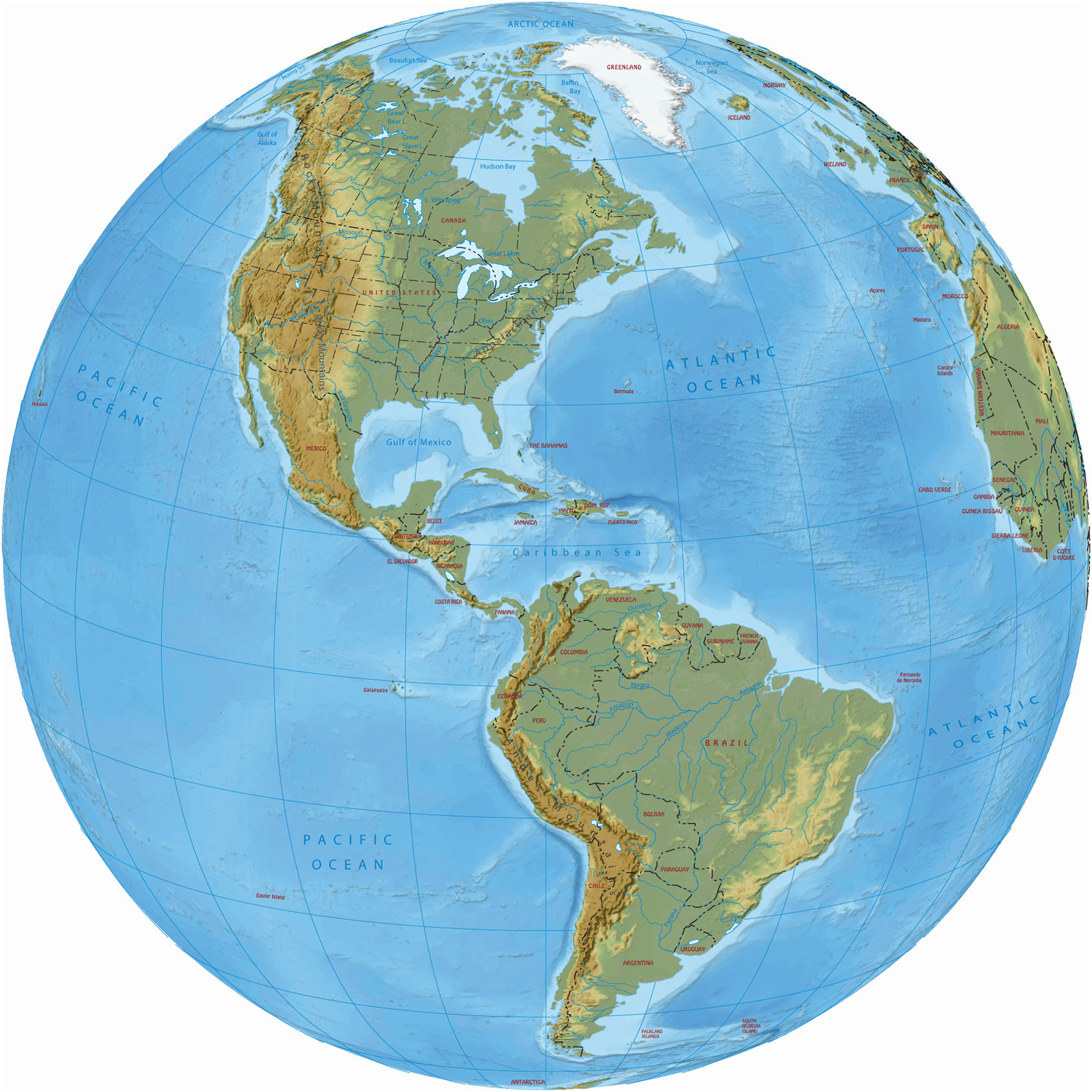North and South America Political Map in the Globe
Earth is composed of three layers: the outer lithosphere, with its crust and uppermost solid mantle, the mantle (the thickest layer, with distinct upper and lower layers), and the core (with an outer liquid core and inner solid core). Researchers have discovered that a transition zone (at a depth of 410-660 km) between the upper and lower mantle may well be hydrous. But this hydrous rock would neither feel wet nor drip water. At that depth, high temperatures and pressures structurally transform a mineral called olivine into another mineral, ringwoodite, which can incorporate water, but not in a liquid, solid, or gas form. The high temperatures and pressures cause: 1) water molecules to split, creating hydroxide ions (hydrogen and oxygen atoms bound together), and 2) create structural changes in ringwoodite so that it is able to contain hydroxide ions. Ringwoodite can hold 1 to 3% of its weight in hydroxide ions. Considering that the 250 km-transition zone is about 7% of the Earth's mass (the crust is only about 1%), it could include as much water than all the Earth's oceans or more (source: The World Factbook).

|
Copyright © Geographic Guide - Maps World. American Continent. |
North and South America Political Map in the Globe
